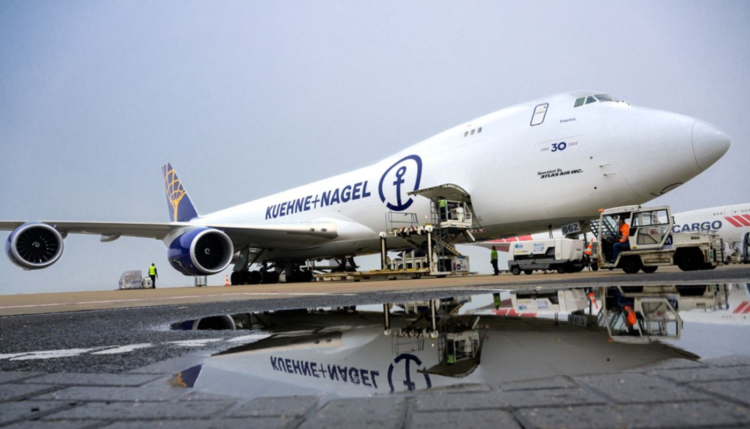Kuehne+Nagel (K+N) has forecast a robust outlook for the air cargo market, driven by rising demand, market volatility, and capacity constraints. The company remains confident in its ability to reclaim the top position in global airfreight forwarding, should it lose the title to DSV.
During a capital markets day presentation, Yngve Ruud, K+N’s executive vice president for air logistics, projected that the air cargo market—excluding e-commerce—will grow by 3% annually from 2025 to 2028. This growth will significantly outpace the 1% expansion in the global freighter fleet over the same period.
Ruud emphasized that key sectors such as aerospace, perishables, pharmaceuticals, semiconductors, and data service centers will be primary drivers of this growth. He pointed to several factors, including the increasing global population, which is expected to boost demand for perishable goods. Additionally, the aerospace sector is anticipated to see continued expansion, fueled by the growing travel and tourism industries.
Investment in semiconductor manufacturing is also expected to grow at a compound annual growth rate (CAGR) of 8-9% between 2025 and 2028, while the logistics sector for data and service centers is poised for growth. K+N’s announcement of a new product in 2024 reflects this trend, with public cloud services spending set to increase by 22% in 2025, driven in large part by investments in artificial intelligence technology.
Ruud also highlighted the impact of geopolitical uncertainty and tariffs, noting that volatility in global trade patterns will fuel demand for reliable airfreight services to maintain resilient supply chains.
On the supply side, he pointed out that freighter capacity utilization is already high, and further strain is expected due to the aging fleet and limited new aircraft deliveries. The phase-out of older widebody freighters is expected to create a gap in the large widebody sector. As of 2018, 8% of the worldwide freighter fleet was more than 30 years old—a figure projected to rise to 17% by 2025.
With new aircraft deliveries constrained, the widebody freighter fleet is expected to grow by just 1% annually until 2028, adding further pressure on air cargo capacity.
K+N is also anticipating a potential shift in rankings within the airfreight forwarding sector. Should DSV’s acquisition of DB Schenker prove successful, the company may temporarily lose its position as the world’s largest airfreight forwarder. However, Ruud expressed confidence that K+N will reclaim the top spot through strategic acquisitions and organic growth.
“Scale matters,” Ruud said. “Our investment in growth historically led us to the number one position in 2021, and we’ve successfully defended that position to date. If we are surpassed briefly, we believe we will regain that leading position.”
To fuel its growth, K+N will focus on expanding services in key sectors such as aerospace, semiconductors, healthcare, perishables, and server and data centers. The company will also continue expanding its charter network and gateways, adapting to changing trade patterns. Notably, K+N’s charter network is set to grow from 13 weekly charter connections in 2019 to 100 weekly charter connections this year.





